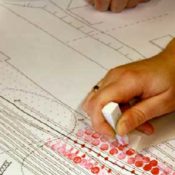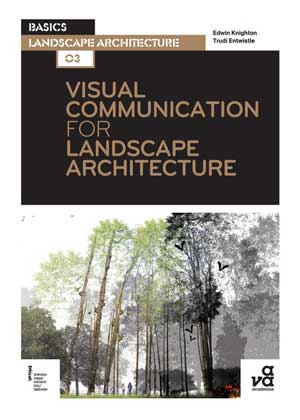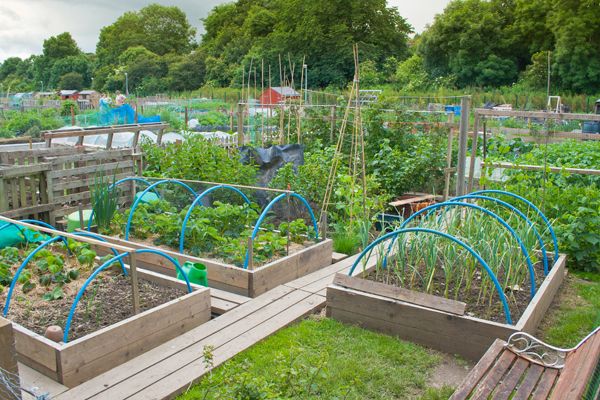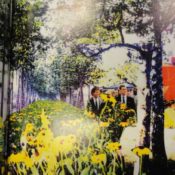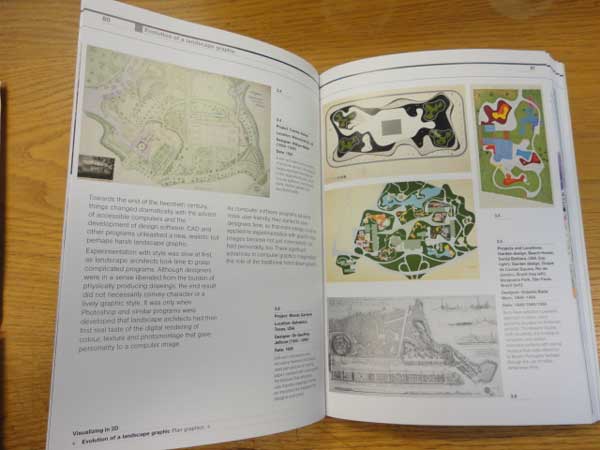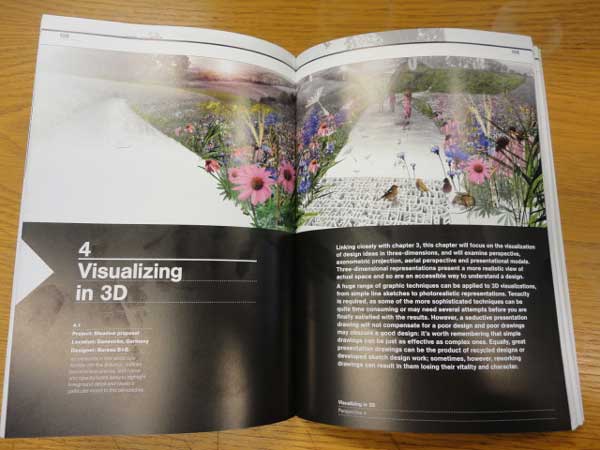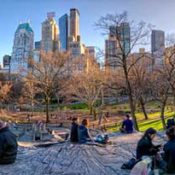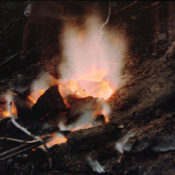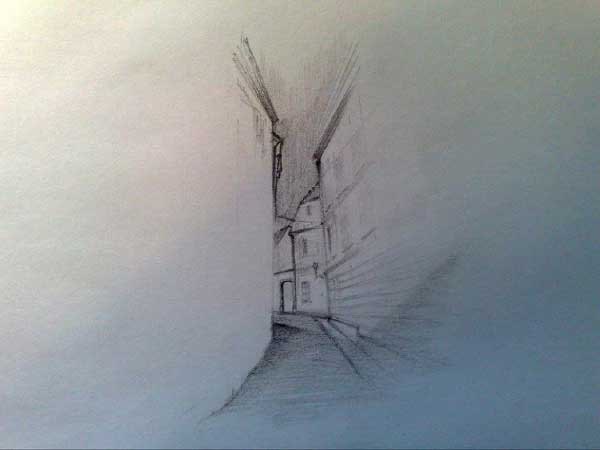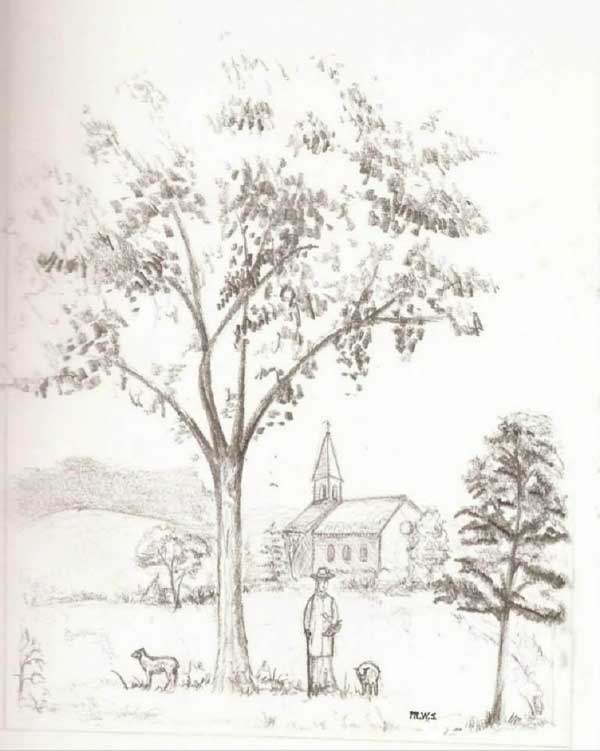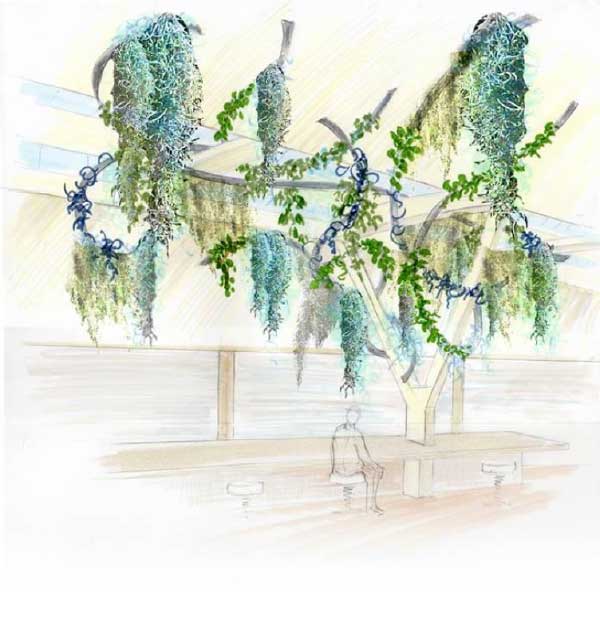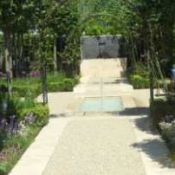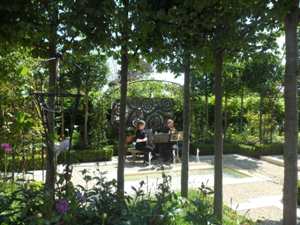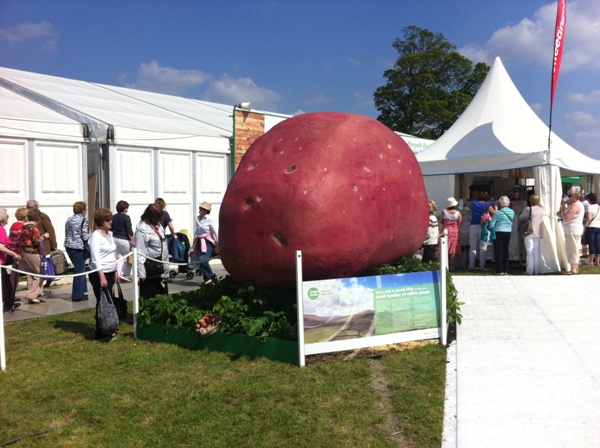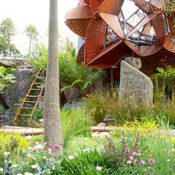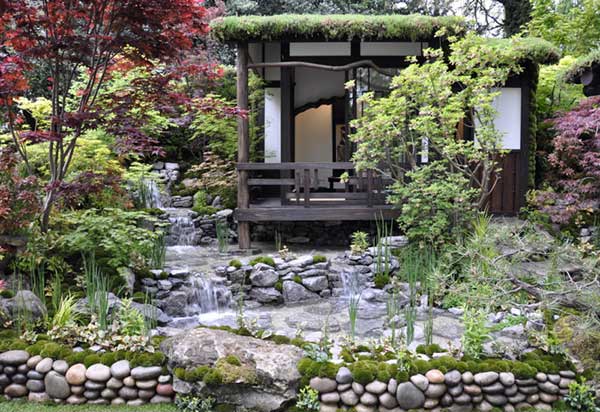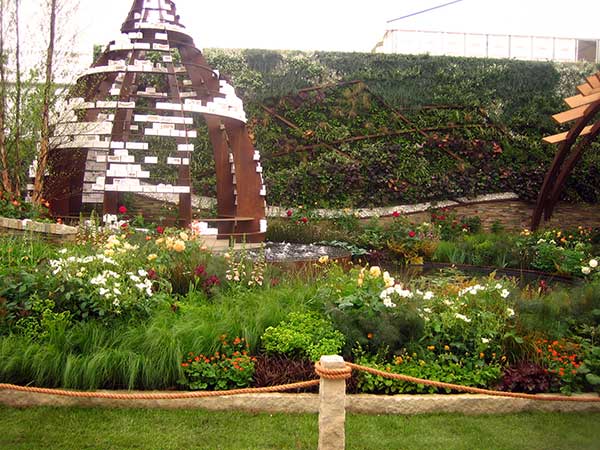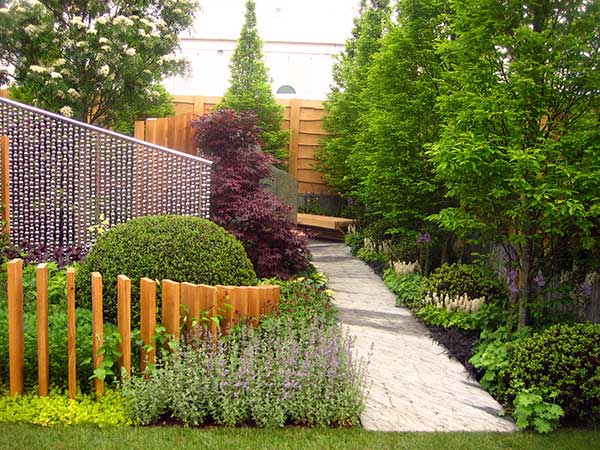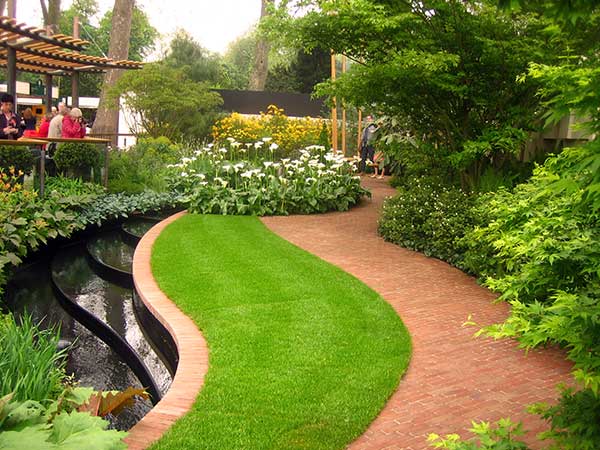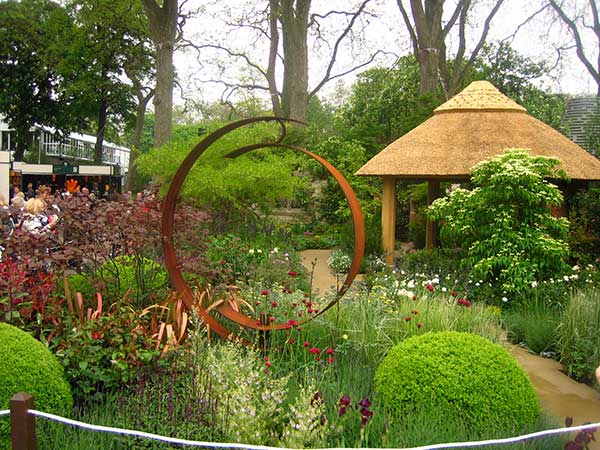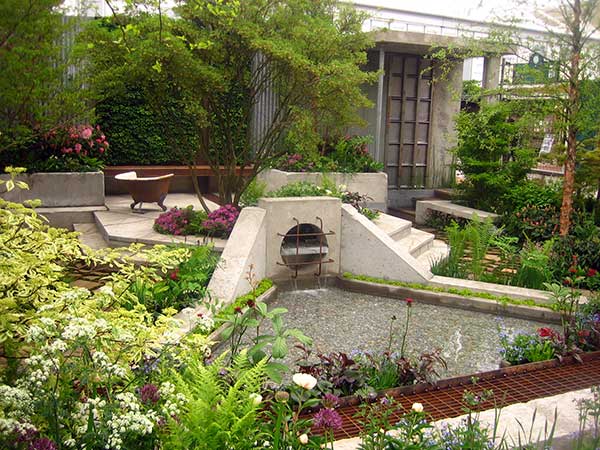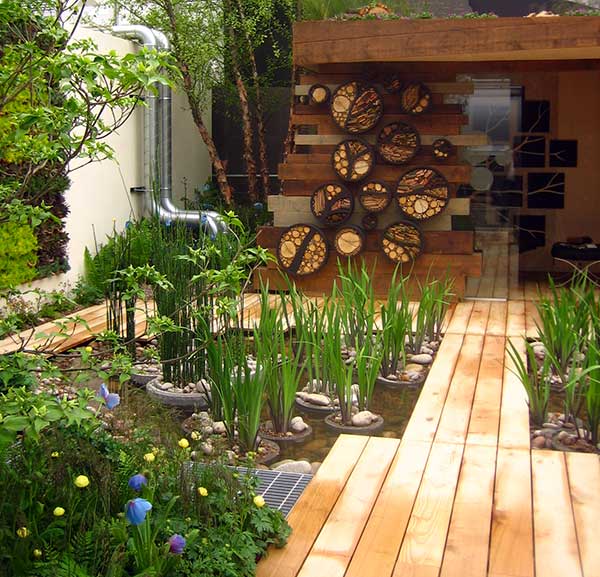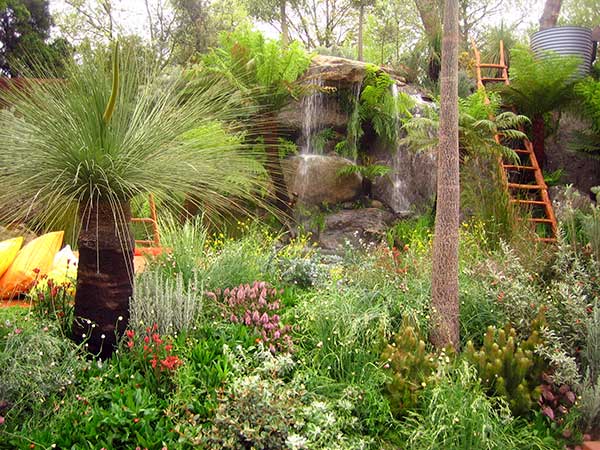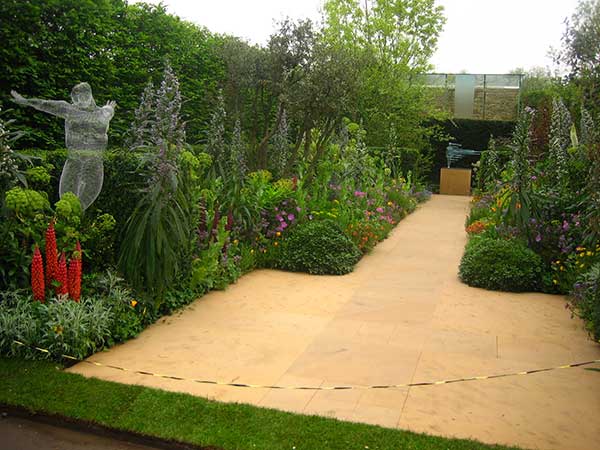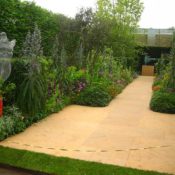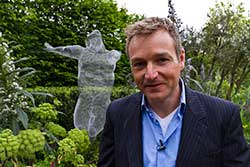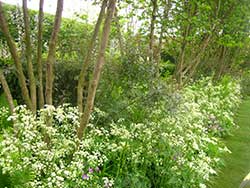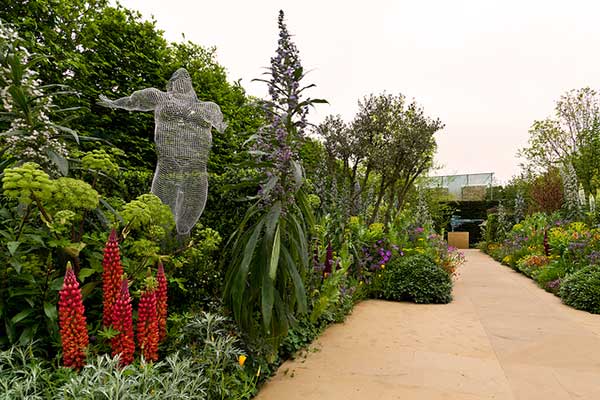Author: Land8: Landscape Architects Network
Sketchy Saturday Top 10 – No. 003
LAN returns with a new edition in the Top Ten Sketches series. Every time we seek to select the most imaginative and crafty work by our readers. So check out our new edition! 10. by Simon Bussiere
This is a view from the train station in Albany, NY. A 10 minute sketch, it started with a nice grease spot from a pepperoni that fell off a slice of pizza I was consuming! The sketchbook page was tilted slightly and the meat slid a few centimetres across the page, starting the light brown streak in the centre of the sketch. I ate the pepperoni and proceeded with my cyan Le Pen to outline the city horizon, then used a light grey, dark grey, and cyan Tombo marker to add some tonal value. 9. by Mahafuj Ali The sketch was an impression of a proposed school hostel in Bhutan. It was designed in a way which should not overpower nature, but blend in with its surroundings. 8. by Martin Vysoký This sketch is the output from an experimental course I participated in. Design is truly conceptual. It’s a way to create identity for local people who inhabit that area (in this case a courtyard) through participation in public art before anything is built and finalized. The sketches were later implemented into the final design. 7. by Morozova Lada I wanted to design a very special zone for relaxing. It looks like ancient amphitheatre ruins. Oak sits on stone benches, surrounded by pine-trees, junipers and flowers giving a romantic feel. By day one could sun bathe and children could draw scenic sketches. In the evening built-in lights are switched on and you could chat with friends, drink good wine, and eat grilled food. The owners say that it is their favorite place! 6. by Dan Willis This sketch was part of design work for a house and its gardens in rural Cheshire, England. For this particular area the owners wanted a Mediterranean style planted border with hints of native English species; the hard landscaping features reclaimed materials and natural stone. The drawing was created using a range of inks to add color and varying line weights. 5. by Simon Bussiere View of kids diving into Lago de Colchiboca from the docks at the volcanic island of Ometepe, Nicaragua. 4. by Rose Brokenshire Rose Brokenshire is a recent graduate of the Bachelor of Landscape Architecture, Guelph University. She is from Toronto, Ontario, Canada. This charcoal drawing is of an old train track, which was a visual component for her final thesis design to describe the under-use and neglect of the site. 3. Mahafuj Ali This sketch is an imagination of a small jungle circuit surrounding a guest house in the foothills of the Himalayas. I have never spent a night in such a place, but I dream of spending a night in solitude, with fireflies, and a full moon. I wanted to frame that dream. 2. by Yoan Zemyarski This Soviet Army Monument in Sofia is located in the central part of the city on an area of 2,000 square meters. By the end of 1989, the Soviet Army Monument is one of the most emblematic places of the city, where all kinds of celebrations occur. In recent years the monument has become a favorite place for skateboarders. On 17 June 2011 the monument became world news after one of the reliefs dedicated to World War II was painted with graffiti. Soviet soldiers were “dressed” like Superman, Captain America, the clown Ronald – a symbol of McDonald’s and Santa Claus. Underneath is written: “In keeping with the times.” From the book Forget Your Past. Monumental Monuments of Communism by Nikola Mihov. 1. by Mael Matthews This is a sketch of the Yorkshire woodland drawn using biro, marker pen, and collage techniques. The lines are made to “bleed” by spraying them with hairspray. I am a landscape architect and artist working in Yorkshire, UK. So there we have it! Another successful edition of our Top Ten Sketches. We are always looking forward to brilliant submissions from our readers and are joyful that the art of drawing and sketching has not disappeared in our day and age. Article written by Oana Anghelache Enjoy what you’ve read! Support us and pick up one of our awesome T-shirts and hoodies today, Click the link5 Steps To Stay Sharp Over The Summer Break
As landscape architecture students, the rapture upon completing a university year is something we all look forward to, and come crunch-time, can often be the shimmering light and the end of a very dark tunnel. The holiday period between each university years is a great time to kick back and relax; after all, you deserve it. But during this stage of quietude, it is also essential to continue the learning process to ensure a cognitive mindset come the new academic year. With all that spare time on your hands, here are five valuable steps to help you stay sharp over the break. 1. Read a book or three (landscape architecture related)
Reading has a myriad of positive effects, but during the semester it can often be hard to capture the edification books provide due to the laborious nature of your study load. That’s not to say you shouldn’t read while at university, but the end of year break presents a valuable period to broaden your knowledge of the discipline. Aim to read at least three books, on different subjects related to landscape architecture. These books can be contemporary, such as The Fundamentals of Landscape Architecture and Visual Communications For Landscape Architecture, or classic landscape literature by authors such as Ian McHarg. Anything that will give you the upper edge next semester. 2. Get outdoors / travel Following the confinement you frequently subject yourself to during those late nights in front of your desk, you will often emerge from the depths looking rather “Gollum-esque”. The holiday period grants you the opportunity to actually get out and experience the landscape! If you are financially able to travel abroad, then go and cultivate some worldliness and behold great landscape architecture around the globe. If not, it’s no reason to fret. Nature is everywhere, and can be easily enjoyed through bushwalks, hikes, and road trips. Even your local park will do! Getting outdoors clears and refreshes the mind, and most importantly gives you the chance to make connections between your learning and the real-world environment. 3. Boost your repertoire No matter what stage of your degree you are in, there will always be room for improvement in certain aspects of your skill set. This could be anything from free hand sketching, technical drawing, software programs, or even developing your conceptual and critical thinking. Strengthening these traits will deliver the confidence needed to tackle any project thrown at you, and will present you in an appealing light to potential employers. There are magnitudes of free tutorials online that can be taken advantage of. It’s important to note that these shouldn’t be viewed as gruelling tasks; after all, you are on holidays! Just set aside some time each week to knuckle down and boost your design repertoire. It will pay dividends in the long run. 4. Work experience With legions of landscape architecture students all competing for job placements upon completing university, simply being a graduate doesn’t cut it anymore. Experience really makes the difference, and the earlier the exposure to the office the better. Doing so will expose you to the rigor of the working environment, giving you the upper hand when entering the real-world workforce. This can be an internship or work experience, either paid or voluntary (usually the case). But don’t sell yourself short. If you possess a certain skill set (achieved from step 3!) display them in style through a creative portfolio or resume. 5. Embrace other creative disciplines Throughout the semester landscape architecture is well and truly your focus, but the holiday break allows you more time to explore other areas of design. This could be visual arts, fashion design, or architectural and interior design which interest you. These avenues should serve as inspiration and insight into all things creative, giving you the opportunity to broaden your mind and view design from another perspective, molding you into a well rounded designer. Holidays are to be savored, so these five steps are designed to be both straightforward and enjoyable. Implementing them throughout your break will provide the opportunity to better yourself as a landscape architecture student, letting you hit the ground running come class time. Article written by Paul McAtomney Featured image: Helder Almeida / shutterstock.comTop 10 Things to do with Your Summer Break!
It’s finally July, the sun is shining and school’s out for summer. For those Über-geeks, keen beans, and even those who just want to keep their hand in — here are 10 things you can do to keep yourself in good stead for the next year ahead at college or university (or just life in general!). 10. Wake Up Early Ok ok, within reason — it is your holiday after all. But do you really want to waste it in bed? Think about those few hours when the sun rises, all is quiet, before anyone else in the world is awake – a serene and brilliant thinking time. Besides it’s been widely suggested that early risers are more productive, creative, and successful. 9. Volunteer
If you haven’t managed to wangle yourself an internship this summer, why not volunteer? There are so many different companies, charities, and local government bodies that would be grateful for a bit of help in the current economic climate. There is bound to be something to suit your interests. Not only will it look good on the CV, but also it will leave you feeling rewarded and satisfied. 8. Read Read, read, and read some more. Read for a project or dissertation coming up, but also read to broaden your horizons. Browse the best magazines, browse LAN, and browse not just landscape architecture publications but others too! This is the perfect time to keep abreast of developments in politics, economics, and the wider society that are both influential to Landscape Architecture and, that in turn, may be influenced by our discipline. Check out our book reviews here 7. Sketch Enough time is spent on computer graphics during term time. With endless weeks and gorgeous summer weather present, take a sketchbook, some pencils, pens, watercolors, pastels, whatever you will, and draw whatever you see! Try quick 1-minute sketches to build up your confidence until you eventually spend longer and longer on them. And remember — practice makes perfect. Why not try out for Sketchy Saturday? Get your sketches into us and be in with a chance to get featured in our top 10 article– e-mail us at office@landarchs.com 6. Hug a tree Ever hugged a tree? If yes, then you’ll know how great it is. If not, then do it! There is scientific evidence, which indicates hugging a tree (ok, just being in open green space in general, but why not go all out?) improves health and well-being. 5. Be inspired! Make time to take a trip. Not necessarily to the Amazon or the depths of India, but to an art gallery, famous place, or just the open countryside. Hop on a random train or bus, cycle out beyond the city. See beauty in something and be inspired. See ugliness in something and be inspired to change it. Get off the computer and out into the world! 4. Take a look at your CV/Portfolio Why not makeover — or indeed start — your portfolio or relook at your CV? Redo some renderings for your portfolio while you have the time. Polish up your credentials. There are plenty of websites out there offering free help. Browse Pinterest or Issuu.com for ideas. 3. Learn a new skill There’s plenty to pick from; learn a new language, dabble in a new computer program/software, take up sewing, try your hand at woodcutting, or master the art of hula hooping. You never know where it could lead you or what interesting concepts you may arrive at from linking different artistic disciplines. Think along the lines of fashion and architecture like Zaha Hadid’s NOVA shoe or music and art a la Wassily Kandinsky’s ‘music paintings’, often numbered and titled “Composition”. 2. Start a blog In the modern world, it’s all about self-promotion. Whether we like it or not self-promotion is all about social media. Keeping a blog helps in this respect but it’s also a wonderful way to keep inspired, keep motivated, and keep a record of your journey and growth as a person and designer. So whether it’s written, visual, or a bit of both, make your mark on the world and web by starting a blog today. 1. Appreciate it. Appreciate it. It’s your summer break, the clue is in the title but don’t waste these glorious weeks. Use them to your full advantage and importantly, remember, once you start ‘a real job’ you’ll rarely have weeks on end to focus on any of the above. So, which will you be doing this summer? Just one or quite a few? Let us know on twitter @latweets4U or via our Facebook page. Article by Sonia Jackett Featured image:Tyler Olson / shutterstock.comMac vs PC-Which One do You Choose?
Now more than ever, landscape architects and designers are heavily dependent on computers for both rendering and technical drawings. As a designer, owning a computer or laptop is basically a necessity. When faced with the task of purchasing one, the number of choices can range from overwhelming to downright confusing. First and foremost is deciding which way you swing – are you to be an “Apple Fan” or a “Windows Loyalist”? We aim to help you out with this feature article on Mac vs PC Myths & Misconceptions Both stereotypes are rather comical and, to a large degree, untrue – I own a MacBook Pro, but I’m not exactly the Vespa-riding art school dropout that common clichés would have you believe. My roommate owns a PC laptop, but this doesn’t somehow make him dull and nerdy. The two computers can seem a world apart, with each side of impassioned partisans righteously defending their weapon of choice, so what are the differences? Price is always at the top of the list, with Macs seeming to be much more expensive than their counterparts. You could walk into a computer store today and walk out with two brand-new PCs for the price of one Mac. Yet in reality, there isn’t much price difference between comparable Macs and PCs. To build a PC that would match the standard that Mac Pro offers – similar software, hardware, etc. — the price difference would be minimal, and by minimal, I mean $6, as shown here. The Pros & Cons That being said, PCs can be customized with as many or as few options as you want, allowing you to adjust the features to meet your exact budget. Compare this with Macs, which are basically non-negotiable with no picking and choosing of features. Another difference is that a PC’s hardware is designed to be upgraded and tweaked to perform repairs or modifications. Macs generally aren’t made to be modified; however, things such as RAM can be added if deemed necessary. Apple’s product lines boast more expensive and better-quality parts, meaning Macs will generally outperform lower-end PCs. This is no reason to be conned by the “genius” at the Mac store – despite common rumor, they aren’t faster, just more efficient. PCs have the one up on Macs in terms of choice and variety, with Apple currently only offering five different lines of computers — which happens to fall neatly in line with Apple’s “less is more” marketing approach. On the other hand, PCs offer a wide variety of shapes and sizes, with up to 11 big-name brands wearing the Windows badge. Buyers often see this copious selection as a benefit, giving them a much greater chance of finding a computer to suit there exact needs. A deciding factor when choosing a side could well be the difference between the level of customer satisfaction Mac and PC owners claim to have. This is where Apple really shines – after purchasing any Apple product, you have free face-to-face access at any of their stores with their genius bar technicians. This relationship is much more personal than ringing company after company before even identifying the problem with your computer. Design is most likely the biggest differentiator between the two brands. The obsession Steve Jobs and Jonathan Ive had with reaching perfection resulted in Macs obtaining their sleek, clean aesthetic, thus producing a brand addiction as opposed to one-off purchases of products. I, for one, find Apple’s designs to be much more aesthetically pleasing, possessing an almost alluring appearance. Bottom Line The Mac vs. PC debate has been raging for more than a quarter of a century, and will continue to do so into the foreseeable future. Apple fans will continue to tout the Mac’s ease of use and elegance, and Windows loyalists will continue to see the enemy as overpriced with too little in the way of choice. As designers, the ability to run industry-standard software such as Photoshop, Illustrator, and AutoCAD effectively and smoothly ultimately depends on what you’re running under your hood, not what brand of computer you possess. It is your personal needs, tastes, and budget that will establish how much hardware and software you can equip, thus determining what side you are willing to take in the ongoing fray. Article written by Paul McAtomney Featured image: shutterstock.com
Visual Communications For Landscape Architecture (Basics Landscape Architecture) – Book Review
Throughout my studies I was taught that there is nothing more important than a landscape architects medium of visual communication. As landscape architects we need our visual communication nearly as much as we need food or a place to rest our heads. The authors of Visual Communication For Landscape Architecture understand this and are clearly lecturers applying their trade. The pocket-sized book, starts with explaining the basics of sketching and the importance of taking good site photographs- something I learned the hard way. Its great for a book to explain the benefits of sketching. When I started in college I wasn’t fond of hand drawing, but slowly came round to the idea.
What can we learn from this book? From the opening chapters its clear that the book is based around analytically reading the landscape. It applies what you have learned on site to better inform design and better visual presentation. It focusses strongly on holistic design- something I’m sure that would please Ian McHarg. Click here and get the book! For its size, the book is graphically presented in a clear manner and its pictures throughout inspire and provide a solid base for any student or practitioner wanting to improve their skills. It’s a great example of a book that could really help students understand scale and the basics of landscape architecture as a whole. It’s an easy to read, go-to book with lots of illustrations for its 195 pages. It gives great examples of real-life projects and what process they used to created their masterplans, from conception to completion. Its text is also full of easy to use words that would improve your technical language and any novice readers out there should have no fear in picking this book up and reading it from start to finish in a couple of days. However, if I was pushed to make a negative remark, the book is lacking short tutorials or a ‘how to’ guide for re-creating the graphic techniques shown. In my opinion, this would be its only real short fall. So is there an audience? From the outset it is clear that this is a, book targeted towards students and graduates. However saying that, I left the book on my desk for the last couple of weeks and it wasn’t long before my older colleagues picked it up- and loved it! Its now been lent to three or four partners in my practice. These are hard-nosed landscape architects and architects, they loved its clarity and easy to read nature. Simplicity really is the books golden thread. Click here and get the book! It’s a must for anyone looking to get into landscape architecture or even designers looking to broaden their palette. I really would recommend this book for an office coffee table. Why buy it? I feel “Visual Communication For Landscape Architecture” pulls no punches, delivers what the title encapsulates and for its price is a real steal. I wish I had picked this book up in college. It is a book that inspires new ideas and great methods to convey sketches to masterplans really clearly. It would be a real bonus for it to be passed around any university studio from student to student- it’s a definite keeper. Concluding thoughts I’ll be honest; this book has real ‘sex appeal’ in landscape terms; is easy on the eye, simple to read and oozes simplicity. I really enjoyed Visual Communications for Landscape Architecture from start to finish.Its appealing illustrations and graphics constantly had me saying “I want to do that!” or “I could do that!”. The book is fantastic for anyone who needs to sharpen up on skills or is just learning and wants inspiration. Visual Communication for Landscape Architecture (Basics Landscape Architecture)The Fundamentals of Landscape Architecture, by Tim Waterman | Book Review
One of the hardest things to do in landscape architecture is to explain what we do. What makes the book “The Fundamentals of Landscape Architecture” stand out as exceptional is that it is a clear and concise record of not only what landscape architecture is, but WHY it is so important. This book is obviously written by an educator — someone who not only intimately knows and understands landscape architecture, but who is also well versed in communicating to a diverse audience in plain English.
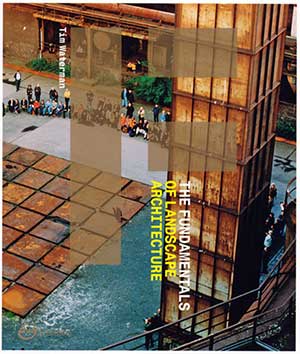
The Fundamentals of Landscape Architecture by Tim Waterman, Click the image and purchase the book today!
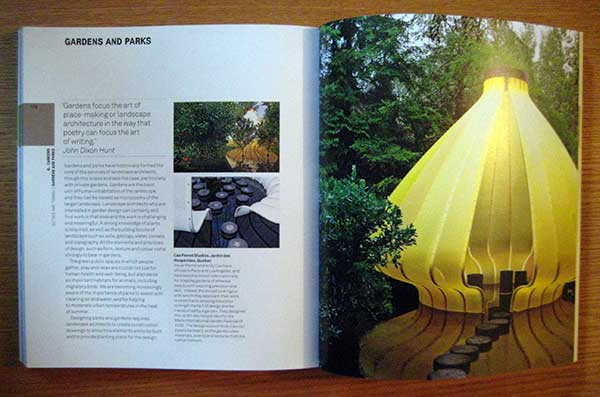
Gardens and Parks chapter (credit: AVA Publishing, The Fundamentals of Landscape Architecture by Tim Waterman, 2009)
Sketchy Saturday Top 10 – No. 002
This Top Ten showcases the most beautiful, intriguing, and inventive sketches by some of our talented Landscape Architects Network readers. So we return with another batch of creative and beautiful works by our beloved and devoted readers. Sketches are getting better and better, and selecting the top ten is becoming a heavy task. We still base our criteria on beauty, technique, imagination, and well executed drawings. So without further a due, here’s the Top Ten! 10. by Andrej Žinić “This is a narrow and small street in an old part of Zagreb. One of many sketches made for a 1st year sketchbook capturing details of architecture and landscapes surrounding us, mainly using slightly softer pencils.”
9. by Marcus Stevenson “I imagined solitude, peace, simplicity, serenity in the beauty of nature and a connection to God. This is often lost in our fast-paced society. This is a peaceful day in the 1700’s depicting an older pastor/shepherd going for a walk through the meadow to taking a break from his studies and pick some flowers to bring home to his wife. I express my art in garden design and sketch what I can, although I don’t consider myself developed. Subject matter and a story are more important to me than technique. My father is a pastor, thus the spiritual influence here. I often sketched in class in college, because it seemed to help me focus better.” 8. by Miguel Lievano, Australia “This sketch of London’s Royal Albert Hall was completed in Spring 1998. As can be imagined, the weather was not ideal. I sketched the drawing fast, trying to capture both the beauty of the building and mood of the neighbourhood.” 7. by Marek Wieronski “In my studies, each student had a sketchbook. This sketch is one page from mine, which accompanied me to different places, sometimes even on the bus or tram, because I never knew when I might see something that I would like to capture. This sketch is my attempt to understand the landscape and capture the most important elements, mixing black dots and dashes of varying pitch and length.” 6. by Maciej Koperski, Warsaw “The image shows a patio in one of the theatres in Warsaw. The space was designed especially for actors and employees, the red boxes playing the role of movable seats which allow the space flexibility. The patio was divided intogeometrical and rectangular spaces filled with plants pruned into geometrical forms.” 5. by Magdalena Subocz, Poland “My inspiration was a sculpture of a dancer in Warsaw’s sculpture park. I designed a composition of plants around the sculpture. The project is simple and the plants that I chose give it a more dynamic character. The composition of plants refers to dance and the emotion it envokes. I tried to a show variety of emotion by seasonal colours, especially green in Spring and purple in Autumn.” 4. by Cathy Vivies “My design based on ‘The Giant’s Causeway’ an artificial mineral garden, which mimics rugged land and stimulates the imagination in order to alter our perception of the space. We can see a pathway around a pond that flows thanks to the circulation of fresh running water. Moss and flowers will be planted between the stones and grow up from the narrow cracks.”
Design concept based on ‘The Giant’s Causeway’ uses moss and flowers to grow up the cracks in the rugged terrain by Cathy Vivies
Drawing Time Now
“Inventing” groundbreaking concepts in a domain as technical and complex as landscape architecture is a very hard task. Try to imagine creating a workshop where people from various artistic domains could engage in brainstorming on proposed technical concepts in landscape sketches! Who exactly has managed to come up with this new idea worth your attention? Noël van Dooren, landscape architect from the Netherlands, in a design experiment that was part of his Ph.D. research, called “Drawing Time”. Background What exactly does “Drawing Time” mean? Time in landscape is not often shown in drawings, although a lot of landscapes grow and change from the stage in which they are designed. Van Dooren organized the design experiment “Drawing Time Now!” at the Academy of Architecture Amsterdam. The intent of this workshop was to “invent” a proper way to draw time within the present context and with the available means. Inspiration was taken from landscape architect Lawrence Halprin’s concept of scores, representing who is doing what and at what moment in a landscape architecture project.
Why is this innovative? “Drawing Time” could be very useful to landscape architects and students, and even to the innovation of the very domain and profession itself. Traditionally, drawings have been mostly concentrated on the spatial composition. With this new concept, landscape architects would be able to understand the principles of the evolution of a landscape better and use that knowledge in designing. Van Doreen requested the 24 participating students to come up with at least one representation on the time aspects. “In making their design, they had to do a drawing that represents time, or more specifically, a score, as I wanted to test out this concept. In this case, the design was not a goal in itself but the vehicle to be able to make time drawings,” says Van Doreen.
‘Drawing’ by Els van Looy (Be), Esther Brun Nl) and Zuzana Jancovicova (Se). The product is a book with a series of drawings depicting the possible development in time in a metaphorical way.
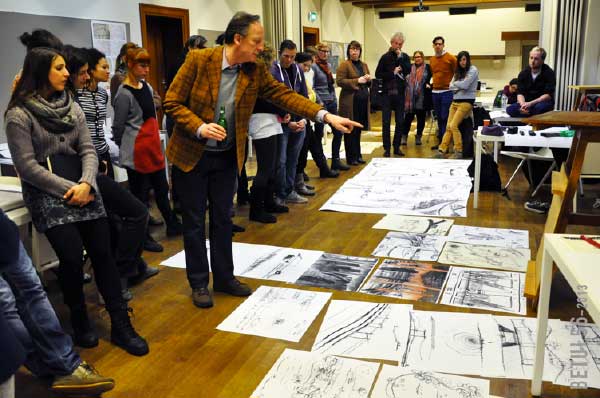
Exercise on Saturday afternoon with artist Frank van den Broeck: drawing intuitively first impressions.
Bloom 2013
There was an air of anticipation around Dublin this past weekend: Ireland’s largest garden show, Bloom 2013, had arrived. It was the seventh annual event hosted by one of Europe’s largest urban parks, the Phoenix Park.
It was opened this year by none other than the president of Ireland — and park resident — Michael D. Higgins.
Bloom was packed with fun for all, with gardening, food, and family enthusiasts flocking to see more than 28 show gardens and to watch more than 25 cookery demonstrations from top chefs from Ireland and Europe. Sneak Peek The Landscape Architects Network had an exclusive peek around Bloom 2013. We will walk you through the best of the show gardens to see how the competition’s gardens have changed over time. And designer and vice president of the Irish Landscape Institute Tim Austin will explain how he gained inspiration for his “Giardino della Mostra” show garden.
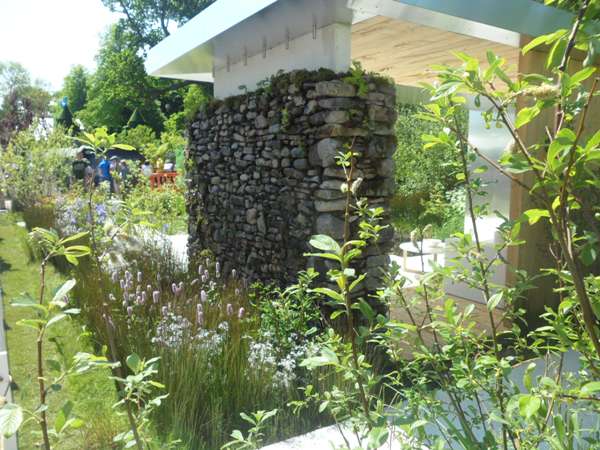
The “Waterford Harvest — Venture Into The Wild” was an awe-inspiring classic show garden by designer Gerard Mullen

LAN writer Fergus McCarthy with Michael D Higgins, the President of Ireland, who opened the festival.
Top Ten Show Gardens: RHS Chelsea Flower Show 2013
The show gardens at Chelsea have come under some criticism this year for lacking ‘pizazz’ or show-stopping drama. At LAN we don’t believe this is true. While it could be said that many of the gardens portray a subtly that belies their depth and meaning, this year’s show gardens all demonstrate an attention to detail that marks them out as being stunning in their own right. Here we delve a little deeper to bring you the best of the best from the world’s greatest flower show. 10. Tokonoma (An Alcove) Garden
Designer: Kazuyuki Ishihara Construction: Ishihara Kazuyuki Design Laboratory Awards: Gold Medal, Best Artisan Garden This rendering of a traditional Japanese tatami room garden is a traditional aesthetic that is not easy to interpret from a western viewpoint, but the naturalistic aesthetic order of the composition and attention to detail speak loudly of a beautifully designed and built garden. We loved the delicate sound of the water adding a constant accompaniment to the garden. 9. Stoke-on-Trent’s Story of Regeneration Designer: The Landscape Team, Stoke-on-Trent City Council Construction: Bartholomew Landscaping Awards: Silver Medal In this garden the huge green wall forms a backdrop to the water feature of interlocking circular forms. The sinuous forms of the design lend the garden an easy relaxed fluidity, which is slightly marred by the stark cor-ten steel pottery bottle kiln structure, which overly dominates the garden. 8. The Laurent-Perrier Garden Designer: Ulf Nordfjell Sponsor: Champagne Laurent Perrier Construction: Crocus.co.uk Awards: Gold Medal Marrying the styles of two female landscape designers Nicole de Vesian and Ulla Molin, this garden is a striking combination of irregular clipped shrubs representing the topography of the native homes of Vesian (southern France), and Molin (Sweden). 7. The SeeAbility Garden Designer: Darren Hawkes Construction: The Garden Builders with Wheelbarrow The SeeAbility garden focuses on sight loss as inspiration for the straight lines and strongly contrasting color palette. Perhaps the contrasting purples of the angelica (Angelica ‘Atropurpurea’) and yellows of the euphobia (Euphorbia characais ‘Wulfenii’ and Euphorbia ‘Martinii’) aren’t to everyone’s personal taste, but we simply love the attention to detail in hard landscape elements like the on-edge slate path and the wall of welded sections of pipe. 6. East Village Garden Designer: Balston Agius Ltd (Michael Balston and Marie-Louise Agius) Construction: Willerby Landscapes Awards: Gold Medal The design draws conceptually on the London 2012 Olympic Legacy and is reflected in the strong architecture and references to local landmarks. We like the simple clean lines of the forms, many of which echo the larger scale forms of the Queen Elizabeth Park. 5. The M&G Centenary Garden ‘Windows Through Time’ Designer: Roger Platts Construction: Roger Platts, NR Jupp Awards: Gold Medal The M&G Centenary Garden is, perhaps surprisingly, the only show garden to have run with the centenary theme. While this manifests in some slightly ‘predictable’ architectural elements, the planting design is of such high quality that this garden is easily warranted its place in our top ten! We particularly love the mix of textures in the neatly clipped spindle (Euonymus alatus ‘Compactus’) next to the soft vertical spires of the foxgloves (Digitalis) and feathery foliage of the grasses (Calamagrostis x arcutiflora ‘Karl Foster’ and C. x ‘Avalanche’). 4. The Wasteland Garden Designer Kate Gould Construction: The Team Landscapers Awards: Gold Medal We love this show garden for many reasons. Not least of all the depth of thought that has gone into representing the conceptual theme. The didactic theme of the garden seeks to demonstrate how brownfield inner city wastelands have horticultural potential. All materials and elements within the garden can be found on a typical wasteland, and yet have been artfully crafted into a beautiful garden. 3. The RBC Blue Water Roof Garden Designer: Professor Nigel Dunnett and The Landscape Agency Construction: Landform Consultants Awards: Gold Medal The contrasting circular and rectilinear form of this garden at first glance appear to be unreconciled. It isn’t until you have had time to take it all in that you can appreciate the repetition in form across differing elements of the garden, which bring the whole together as one composition. We particularly love the aesthetic circular hibernacula proving that sustainability can also be beautiful. 2. The Trailfinders Australian Garden Designer: Phil Johnson Construction: Phil Johnson Landscapes Awards: Gold Medal, Best in Show The Australian garden is, without a doubt, an amazing feat of design, engineering, and construction. The garden features a microcosm of Australian habitats centered around a naturalistic billabong, complete with waterfall. The sheer scale of the garden is impressive. 1. The Arthritis Research UK Garden Designer: Chris Beardshaw Construction: Keith Chapman Landscapes Sponsor: Arthritis Research UK Awards: Gold Medal Although this garden did not win ‘Best In Show’ we love it as it works so well on so many levels. Gardens as pieces of artwork can be allegorical and steeped in layers of conceptual meaning. We love this garden as the concept of exploring someone’s personal journey being diagnosed with arthritis. It translates beautifully into a garden that works spatially, conceptually, aesthetically and functionally. Other articles of interest:While this year the show gardens at the RHS Chelsea Flower Show do not display ostentatious gimmicks or make outlandish design statements, there is a subtle and understated intelligence to many of them. The Trailfinder’s Australian Garden demonstrates exuberant drama in its ecologically sustainable microcosm, while other gardens, like the Arthritis Research UK Garden and the Wasteland Garden, use British native plants to create more subtle effects. One thing you can always count on at Chelsea is that there is something for everyone! Article written by Ashley Penn Enjoy what you’ve read! Support us and pick up one of our awesome T-shirts and hoodies today, Click the link
Chris Beardshaw Interview
At RHS Chelsea Flower Show 2013, Chris Beardshaw is currently exhibiting the Arthritis Research UK Garden, the Gold Medal winning entry for the charity of the same name. The garden explores the journey of someone who has been diagnosed with arthritis, and is a triumph of conceptual garden design. I was hoping to interview Chris while at Chelsea on Press Day. As if by testament to his popularity he was fully booked for the whole day! Luckily I was given just a few minutes to talk with him at the end of the interviews. Both wearing dark blue jeans and matching blue pin striped blazers, I was at first concerned we would look comical together. If he noticed he was too polite to comment. He greeted me with a warm smile. As I thanked him for his time he reassured me that it was his pleasure. Chronically aware of the TV camera’s still pointing at us from his last interviews, I could feel time ticking away, so I asked my first question.
- Your concept for the Arthritis Research UK Garden works with a personal journey of someone who has been diagnosed with arthritis. What was it like working with a concept that is so close to your own experience?
(Chris nods). I think when ever you’re dealing with a very personal storyline you’re either in danger of it becoming so personal that it becomes egotistical, it becomes just a rather selfish expression, of which the relevance is perhaps missed by other people or it drives you forwards and demonstrates the fluidity of the whole design process. For me it was the latter. It was great for me to be able to understand from first hand experience the emotional roller coaster of being diagnosed with arthritis, which is what this garden is all about. And so to be able to interview the client, the client base, which is essentially clinicians, physicians, consultants, anyone suffering with arthritis, which was all drawn together. To talk to them about, not only how they feel, but also about how they respond to various treatments, and what lies in the future, started to bolt on to that linear design process that I was able to add, having been diagnosed with arthritis when I was a young teenager. I mean, you can imagine what that’s like. To be different, or to have something different about you at a time what you really don’t want to be different in any way. But I was able to use all that, to bring it together, to express the journey in this garden.
- I notice that the veiled garden is set at the back with the yew hedge partially obscuring view of it. I was wondering if this featured in the concept? As an outsider, someone who doesn’t have arthritis, we are, perhaps, not fully aware of what its like to be in that place.
(Chris smiles broadly) That’s very astute! With the yew hedge and sculpture in front hinting at what’s behind, the full meaning is not communicated immediately. Of course when we meet people we don’t always know about the conditions they might have or what’s going on. It’s the same for someone with arthritis.
- Many of our readers are students. What advice would you have to a young designer who is thinking about designing for Chelsea?
If anybody is going to design a garden for Chelsea it’s a difficult decision to make. You are responsible for communicating the client’s message and the weight of that burden can be heavy. It’s very hard work, of course, and involves months of planning. Gardens and landscapes, and historic landscapes, aren’t seen as art in this country. If this (gesticulates to the Arthritis Research UK Garden) were a piece of furniture or a painting it would be protected and placed behind a piece of glass where people can see it. But because they’re landscapes and gardens they aren’t protected in that way. That’s why education is so important and is where students can play a role in raising awareness that landscapes and gardens are important and worth protecting.
Unfortunately this is where my time ran out. I could hear people behind me packing up the literature talk to Chris. I thanked him again for his time. He smiled broadly, said “Not at all!” and shook my hand. From interviewing Chris Beardshaw, and reading the interpretation literature regarding the Arthritis Research UK Garden I gained an understanding for why Chris is so popular in his broadcasting and design work. He is an example of a rare type of garden designer. One that is gifted in all three key areas of garden design: conceptual understanding and interpretation, spatial design, and horticultural knowledge and experience. Interview conducted by Ashley Penn Enjoy what you’ve read! Support us and pick up one of our awesome T-shirts and hoodies today, Click the link6 Essentials Things to Consider Before Selecting a Landscape Company in Hot Climate
When you are working on landscaping, you need to think of several complications that can make your entire layout lifeless. Only few definite things can last in the landscaping desert; you need to know what actually they are. Well, here are some tips to be considered while you try to select a good landscape company. In reality, you may find several surprising things. People may forget about themselves that they live in the desert when they plan to start landscaping. They think that enough water, confidence, and hard work will do the job for them, but in actual fact, that is not true. No matter how hard you work on your garden, it resembles a rain forest. 1. After you are comfortable enough to decide with the datum that you live in desert, prepare yourself for the next step. The basic part of landscape will be grass or rock. It is again up to you to decide the best, but again you need to keep certain things in mind before making basic decisions. 2. Many people feel that grass is a kind of status symbol. It is expensive to upkeep and it does make the maintenance work harder; however, still individuals are more concerned about their lawns. Of course, there are people who like grass much better. It is soft, lively, green, and appealing. You need to keep in mind that rocks do come in several colors and styles. They look pretty different from other landscaping options. 3. Landscaping in Las Vegas is pretty difficult for its heat. You need to consider one thing- this particular city gets very less rainfall when compared with other cities. It means that landscape should be watered well by hand or sprinklers very often. Because of this fact, plants that are purchased should be watered very often. 4. When it comes to water, you need to be very sure to consider this as an important factor. Watering the landscapes in Las Vegas is more hassle. It can also be much expensive. When you speak specifically with respect to the water conditions, it may worsen very soon and it is forced to ration. Usually, water in the drought emaciated city will be much expensive when compared with the other cities. 5. It is recommendable to consider temperature tolerant plants. Sometimes, it is hotter in the deserts and plants that are exposed to complete sun burns under harsh sun-light. When this happens, it doesn’t matter how much you water the plants; they’d just tend to perish. 6. Do not give up landscaping in Las Vegas. You can see many nice flowering plants, which are native to deserts. They look prettier like flowers from the greener states. You just need to try finding and planting something, which make you feel happier. There are plenty of landscaping contractors, who can help you in getting this job done. These landscaping companies offer wide-ranging and inexpensive turnkey residential, commercial landscape, and also maintenance services to wide range of clients. So, it shouldn’t be too hard to find a good landscaping contractor who can handle your requirements, and execute things to perfection. There are many established landscape companies that offer complete solutions to the residential as well as commercial markets all over the city. Depending upon your needs, look for the right firm that can get the job done flawlessly. Article written by guest writer Cassie Fabre


